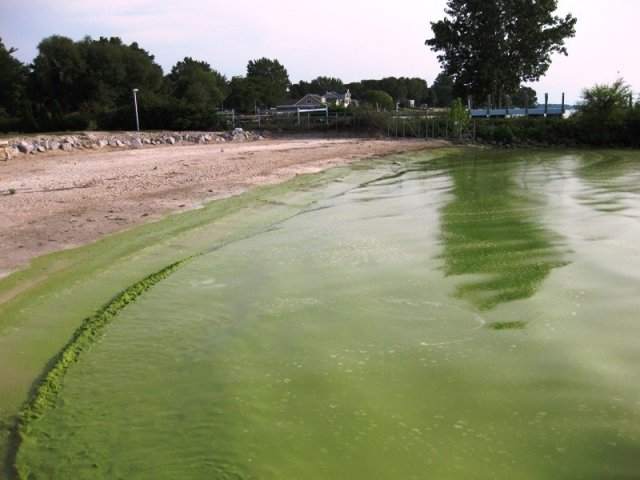Indicators: Chlorophyll a
What is chlorophyll a?
Chlorophyll is a key component of photosynthesis, the process of making food from sunlight, carbon and water. Chlorophyll-a is the predominant type of chlorophyll used by algae and cyanobacteria. It can therefore be used to measure the quantity of these organisms in a lake or on a hard substrate, as well as to classify trophic state.
Why is chlorophyll a important?

Chlorophyll a is a measure of the amount of algae and cyanobacteria growing in a waterbody. It can be measured from a sample collected from the water column or from the substrate at the bottom of a lake or stream. Algae and cyanobacteria are a natural part of freshwater ecosystems however, too much of these organisms can cause aesthetic problems such as green scums and bad odors, and can result in decreased levels of dissolved oxygen. Some algae and cyanobacteria also produce toxins that can be of public health concern when they are found in high concentrations.
What can chlorophyll a tell us about the condition of the water?
One of the symptoms of degraded water quality condition is the increase of algae and cyanobacteria biomass as measured by the concentration of chlorophyll-a. Waters with high levels of nutrients from fertilizers, septic systems, sewage treatment plants and urban runoff may have high concentrations of chlorophyll a and excess amounts of algae and cyanobacteria. The National Lakes Assessment uses chlorophyll-a in the water column to classify the trophic condition of a waterbody (oligotrophic, mesotrophic, eutrophic or hypereutrophic) and to determine good, fair, and poor biological condition.
How is this indicator used in NARS?
Four surveys collect chlorophyll-a data and chlorophyll-a is used as an indicator in three of the surveys. Data is available on the NARS data page. Below the table you access assessment information in current reports.
| NLA | NRSA | NCCA | NWCA | Indicator Type |
|---|---|---|---|---|
| X | X | X | X* | Core Indicator |
| Research Indicator |
*Chlorophyll-a is not a core indicator in NWCA but is measured
National Lakes Assessment Web Report – Chlorophyll-a Results
National Coastal Condition Assessment Web Report – Coming Soon.
